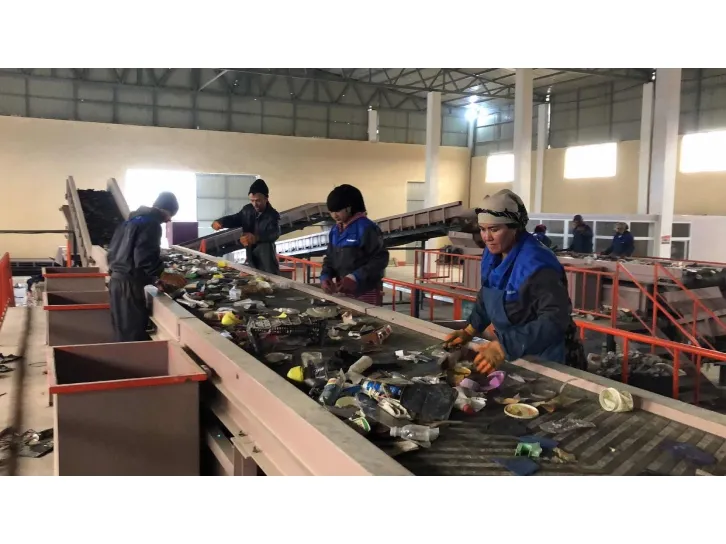
12 月 . 04, 2024 09:32 Back to list
Understanding Eddy Current Aluminum Separation A Comprehensive Overview
Eddy current separation is an effective method utilized in the recycling industry to separate non-ferrous metals, particularly aluminum, from other materials. This technology leverages the principle of electromagnetic induction to exploit the different properties of metals, leading to efficient separation processes. As industries move towards sustainable practices, the significance of technologies like eddy current separation has grown considerably.
The Principle of Eddy Current Separation
At the heart of eddy current separation is the generation of eddy currents in conductive materials when they are exposed to a changing magnetic field. When a non-ferrous metal such as aluminum passes through a magnetic field created by an eddy current separator, it induces circular electrical currents within the metal. These eddy currents oppose the original magnetic field, and as a result, the metal experiences a repulsive force. This force varies depending on the type of metal, its conductivity, and its physical attributes. Therefore, different non-ferrous metals can be effectively separated based on their individual responses.
The Separation Process
The eddy current separation process involves several steps
1. Material Preparation Initially, the mixed materials are fed into the system. This material may include plastics, metals, and other waste products, often resulting from industrial processes or post-consumer recycling.
2. Ferrous Removal Before the eddy current separator, ferrous metals (which have different separation characteristics) are removed using magnetic separators. This step ensures that only non-ferrous metals, including aluminum, are processed for further separation.
3. Eddy Current Separator The heart of the operation, the eddy current separator, consists of a high-speed rotating magnetic rotor. As non-ferrous materials such as aluminum pass over the separator, the magnetic field induces eddy currents in the aluminum. The resulting repulsive force causes the aluminum to be flung away, typically into a separate collection bin.
4. Post-Separation Processing After separation, the recovered aluminum can be further processed, cleaned, and prepared for transport to metal recyclers. This step enhances the purity and quality of the aluminum recovered from the mixed waste.
Advantages of Eddy Current Separation

Eddy current separation offers numerous advantages in the recycling industry
- Efficiency This technique is highly efficient, allowing for the rapid processing of large quantities of material, thereby significantly reducing labor costs and increasing throughput.
- Selective Separation Eddy current separators can effectively differentiate between various types of non-ferrous metals, including aluminum, copper, brass, and others, leading to higher recovery rates.
- Reduced Contamination The method minimizes the risk of contamination with ferrous metals, as these are removed prior to the separation process. This results in cleaner and purer aluminum recovery.
- Environmental Benefits By efficiently recovering aluminum, eddy current separation contributes to reducing the need for virgin materials, thereby minimizing the environmental impact associated with mining and processing.
Challenges and Future Prospects
While eddy current separation presents substantial benefits, there are challenges that the industry must address. For instance, the technique's efficiency may be affected by the size, shape, and surface condition of the aluminum scrap. Additionally, advancements in technology continually evolve the efficiency and effectiveness of the process, requiring ongoing investment.
Looking ahead, innovations such as smarter sorting technologies and integrated systems that combine eddy current separation with other separation methods are on the horizon. The rise of automation and AI-based sorting systems holds the promise of significantly enhancing the efficiency of material recovery operations.
Conclusion
Eddy current aluminum separation stands out as a pivotal technology in the realm of recycling and waste management. By harnessing the principles of electromagnetic induction, it enables the efficient removal of aluminum from mixed waste streams, contributing to sustainable resource management. As environmental concerns mount and the demand for recycled materials grows, technologies like eddy current separation will play a crucial role in shaping the future of metal recycling, fostering a more sustainable and circular economy.
Latest news
Unveiling the Power of Eddy Current Separator
NewsSep.25,2024
Transform Your Home Recyclin:home metal shredder
NewsSep.25,2024
The Future of Waste Management with Recycling Line Picker
NewsSep.25,2024
The Benefits of a Metal Recycling Plant
NewsSep.25,2024
Revolutionize Material Separation with Onwang Technology
NewsSep.25,2024
Innovative Waste Management: Unveiling the MSW Sorting Plant
NewsSep.25,2024